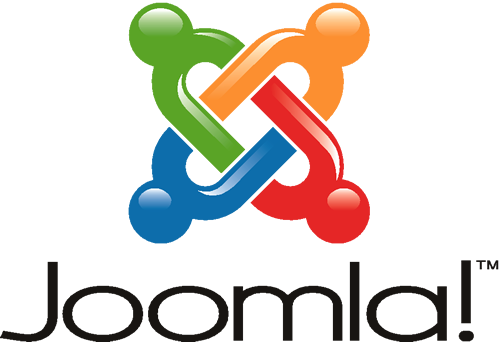Everything about Web and Network Monitoring
by zhirayr | Apr 27, 2012
Two of the most popular content management systems (CMS) available are Joomla and Drupal and for very good reason too. Both of these CMS’s are built using PHP and MySQL which means they can be installed on the majority of hosting environments, from a low cost shared hosting package, right upto a powerful dedicated server. They have both been used for a variety of different types of websites, from simple websites with a few pages, larger magazine websites with many pages and users, ecommerce websites mainly for small businesses not ready to venture onto something like Magento, right through to enterprise level websites for large businesses and even government websites including whitehouse.gov (drupal).
Choosing a definitive #1 and #2 is not going to be easy and anyone who tries to justify one as being better than the other is merely doing so because they have their own favourite. They both have their own merits which have enabled them both to grow a legion of loyal users who will swear by both of them. The best way to find out which one is right for you, would be to test them both to see which one you prefer. If you do plan to test them out, it is advisable to so in a safe environment such as on your local computer using something like XAMP or on a server using a sub-domain or old neglected domain name that you are not currently using.
Not a great start to an article I agree, but understanding your own needs and requirements is paramount to knowing which one you should go with. So with this, let’s get to know Joomla and Drupal a little better and see what you could be using them for on your own websites and those of your clients.
If you have heard anything about Joomla and Drupal, it will most likely be that Joomla is a tool for beginners and Drupal is best left to developers. However like a lot of advice online, this is out-dated and almost irrelevant now as this was mostly true of previous versions of the software. If you are planning on using this for a client website, it’s going to be a case of making sure that the client is not going to take one look at the admin area, freak out and then begin sending you support emails to help them out with every little thing. Allow them to test the backend admin area, give them the opportunity to test things and of course, get to know and like it early on.
If you want happy clients, you need to find a CMS that does everything you need it to do, but also find one that your client will be able to get started with easily and without too many questions. Joomla has always been the hands down winner, but thankfully, Drupal 7.x has improved thanks to the addition of UX designers to the core team developing Drupal. This means it is only going to get easier to use making it even more of a challenger to Joomla.
The problem for anyone choosing aCMSfor a client is trying to detach themselves from their experience and put themselves into the mind set of somebody new to the CMS in question. When your workflow methods have been finely tuned to working with a particular tool. You no longer see the problems and difficulties with using the tool and your judgement will then become clouded. You will have had time and experience to understand and learn your own workarounds to get the best out of them. So if the end user is to be one of your own clients and not you yourself, you want to be sure that whatever you choose, the client will be happy with the end product.
 Joomla Pros and Cons
Joomla Pros and ConsPros
Cons

Pros
Cons
Is this a personal project with little time and money to spare, more of a labour of love or is this to be a commercial website for a client where by your time is their money? Maybe you do not have the time to test, implement, change and test some more. Whatever your reasons for looking for a new CMS to use, spending some time getting to grips with the various online demos available will give you some idea which CMS may work best for you.
Below you will find some advice for anyone building a:
Personal Website
In this case, either solution should work for you and you should have the time to test out the various extensions and modules, as well as install a few of the free themes to get to grips with customizing them to your needs. You could also buy one of the premium themes to see what they have done and to improve the overall look of your website.
Business Website
With the sheer number of enterprise and government websites making use of both of these CMS options, you should have no worries about using them for one of your own client projects. You could also include this in your client pitch, so they can see for themselves just how trusted they both are. There really is no clear winner here to pick between the two so the only logical answer would be to make sure you have tested and got to grips with your chosen CMS before implementing it on a client website. If you are comfortable with coding, then Drupal will clearly give your client more options and scope, but if you are happier working on web design, then Joomla is likely to be the better option.
Shopping Website
This is where both of these CMS excel with two great options available in the form of Virtuemart for Joomla and Ubercart for Drupal. Both of these systems offer up a very capable ecommerce solution which enables easy control over then content, with the addition of the ecommerce sales solution. There are other solutions available for both Joomla and Drupal, but these have both been around for a number of years and have proved popular. Compared to something like Magento, they are unlikely to match up but for smaller shopping ecommerce solutions, these are likely to be ideal solutions for getting a website and an ecommerce solution up and running with the greatest ease, even on a limited budget.
If you were to use something like Magento and a separate CMS for content, the additional costs of bridging the customer/user login details with both databases would need to be considered, as would the need to design a template for both the shopping part of the website and the CMS. This is no doubt one of the reasons why Virtuemart and Ubercart have become popular solutions for both CMS’s, especially for smaller low budget ecommerce solutions.
This is a tough one because both Joomla and Drupal have a lot going for them and they are constantly improving which is great to see.
Drupal was always the developers CMS of choice, it was more powerful and more hands on. But lately, they have started to ease back on the feature developments in favour of making the whole system a lot easier to get started with for regular users. This is likely to pay off as it makes the entry point to new users and non-technical user a lot easier with less training required to get started.
Joomla on the other hand has always been the one which new users felt more comfortable with and was simpler for non-technical users to get going with a lot quicker. Joomla is starting to build up its capabilities and features and this can only be a good thing. It needs to work on improving its capabilities and prove itself to developers as a CMS of both the end user as well as developers.
The one system that is always in the wings is WordPress; it is far and away the easiest of the three and has surely given both camps a lot of sleepless nights. They have shown both Joomla and Drupal how to make a leading CMS and what needs to be done to get both end users and developers on board. They should both be learning from WordPress, how to build a user friendly, yet powerful CMS if they want to get more users on board. They both need to work on making their offerings powerful, yet easy to use as well as making them easily customizable. It is often said that WordPress requires a lot of plugins to give the same functionality of a Joomla and Drupal website. But the fact remains that WordPress is what people are happy to use and what works well for a lot of people.
Category: Free Tools | Tagged 1 Comment.








